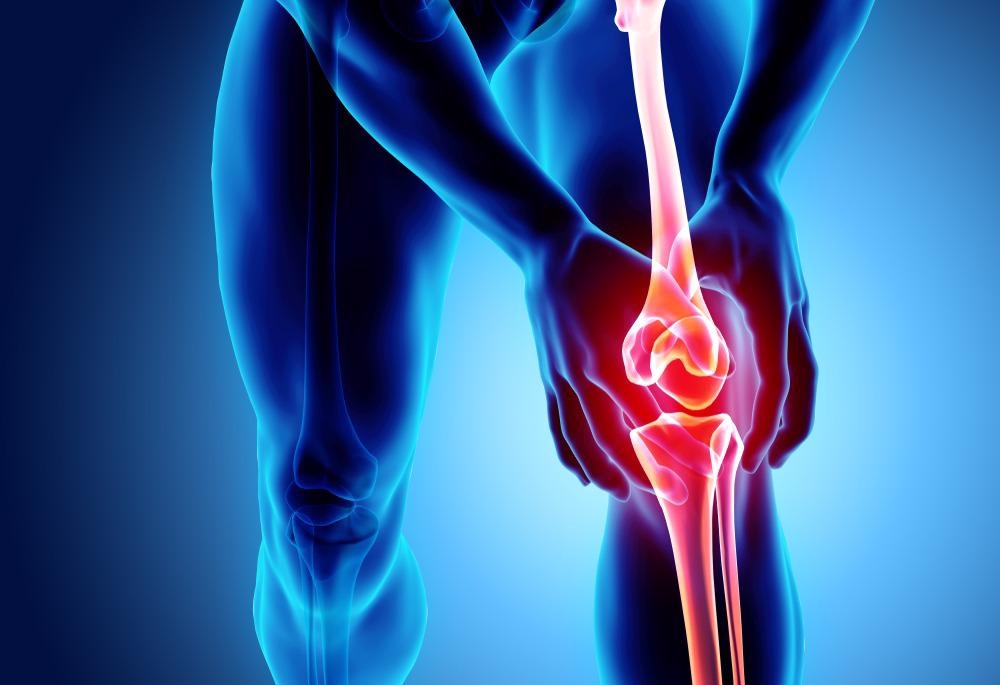A group of researchers proposed an optimized electroforming strategy to achieve a bioinspired nano-holed TiO2 coated Ti6Al4V alloy, according to a study published in the journal ACS Applied Material Interfaces.

Study: NIR-Reflective and Hydrophobic Bio-Inspired Nano-Holed Configurations on Titanium Alloy. Image Credit: MDGRPHCS/Shutterstock.com
Near-infrared (NIR) energy plays a critical part in directed exterior stimulation treatments, and it is increasingly used in spine treatments. As a result, biomaterials with NIR-activated characteristics are intriguing for future orthopedic operations.
Structures demonstrated the creation of localized nano-pores grouped in a periodic configuration thanks to careful management of the electrodeposition conditions.
According to Cassie-Baxter's model, this unique arrangement resulted in greater thermal decomposition resistance and accurate hydrophobic permeation behavior, both of which are required for optimal biological reactions in an implantable device for directed bone replacement.
Furthermore, the randomly distributed sub-wavelength-sized crystalline structure has distinctive optoelectronic properties, resulting in greater NIR reflectivity.
Importance of Near-Infrared (NIR) Radiation
Because of its low diffraction and absorption by indigenous biomolecules and natural substances, near-infrared radiation (NIR) (720-1280 nm) has a greater cellular permeability.
As a result, its usage as illumination in phototherapies has piqued the interest of the healthcare sector.
There has been an abundance of documented studies and research that have mostly described the advancements of NIR-light-sensitive materials and their prospective therapeutic abilities to date.
Modern investigations have demonstrated that NIR energy phototherapies are likely to generate accurate and less intrusive remedies not only for bone malignancies but also for transplant pathogens, osseous inflammatory diseases, and even tissue repair in the case of bone disorders.
Utilization of Titanium Alloys as Biomaterials
Due to their high bioactivity and physical characteristics, titanium alloys are now the most extensively utilized bone replacements in therapeutic implants.
On the other hand, titanium oxide has strong photoelectrocatalytic capabilities, making it ideal for photodynamic and photonic therapy.
However, its total photochemical action is limited to UV light (275-390 nm), which has a limited application in medicine owing to its well-known negative impacts on normal tissue and limited transmission.
As a result, various proposals have been made to expand the optical sensitivity of titanium-based biomaterials from ultraviolet to visible and near-infrared areas by doping them with conductive, non-conductive, and rare-earth elements, or by inducing a regularly structured arrangement on them.
Mimicking Biological Features on Titanium-Based Orthopedic Materials
Recreating biological structures on titanium-based orthopedic materials and integrating them with photonic qualities triggered by NIR can contribute to titanium's inherent good attributes. This advancement would extend the spectrum of potential in the realm of metallic implant-based health therapy.
The researchers claimed that after developing a nano-holed organic layer, they were able to modify titanium alloy to achieve NIR optical characteristics.
Their coated Ti6Al4V exhibits higher resilience against oxidization, hydrophobic surface morphology, and increased light-trapping capacity in the NIR range, thanks to its nano-holed coating.
These characteristics would be used to create flexible and useful alloys for pharmaceutical products.
Research Findings and Conclusion
The researchers investigated the fabrication of a nano-sized film of heterogeneous TiO2 on Ti6Al4V alloys.
A bioinspired periodical array of nano-sized holes was achieved after precise regulation of electrodeposition parameters such as input load, electrolytic composition, pressure, and electrodeposition duration.
Their research shows that the coating offers the metallic sheet a surface with thermal oxidation resistance, nonlinear texture, hydrophobic wettability behavior, and distinctive NIR electro-optical properties as a result of its distinctive and well-defined surface topography.
The preferred phase change of the nano-holed-coated Ti6Al4V during the oxidation process has been verified to be rutile.
The reaction is limited to the surface, rather than the Ti/metal oxide contact, as reported in other studies, retaining the metal core unaffected up to 800 degrees Celsius.
Water fills the micro-textures but not the nano-holes, indicating that the nano-holed coating has a hydrophobic wetting capability according to the CassieBaxter regime.
Even in the existence of physically hydrophilic chemicals, a hydrophobic behavior underlines the importance of nano topography in determining the chemical properties of the materials.
Continue reading: What are Hydrophobic Nanomaterials?
Reference
Federico Belen, A. et al. (2022). NIR-Reflective and Hydrophobic Bio-Inspired Nano-Holed Configurations on Titanium Alloy. ACS Applied Material Interfaces. Available at: https://pubs.acs.org/doi/10.1021/acsami.1c22557
Disclaimer: The views expressed here are those of the author expressed in their private capacity and do not necessarily represent the views of AZoM.com Limited T/A AZoNetwork the owner and operator of this website. This disclaimer forms part of the Terms and conditions of use of this website.